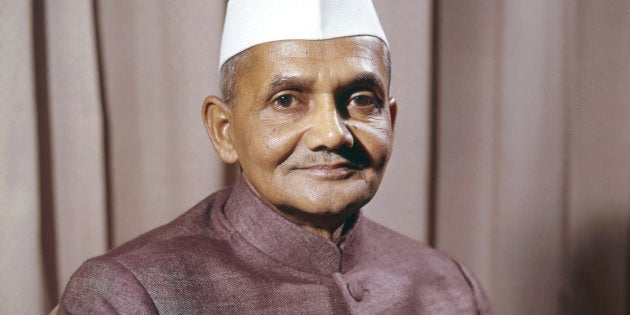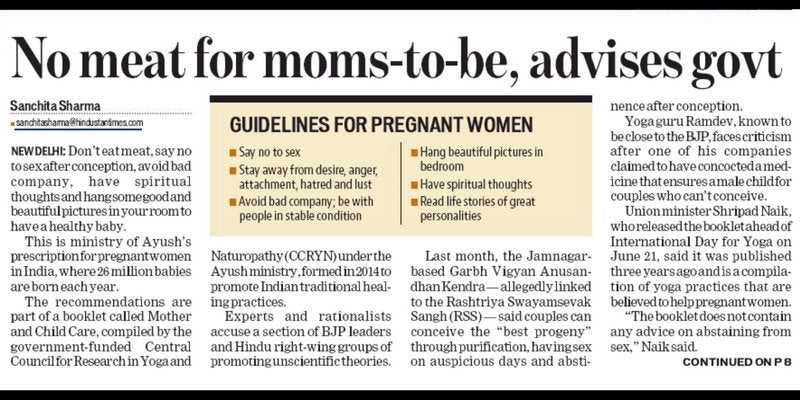
In the rush to remember the Mahatma on his birth anniversary, it is easy to forget one of MK Gandhi's most ardent followers, also born this day and a leading light of independent India.
Lal Bahadur Shastri, India's second prime minister, who succeeded Jawaharlal Nehru in 1964, enters his 114th year on 2 October 2017, with muted remembrance from the nation, though his legacy as an astute statesman is more pertinent than ever in the prevailing political climate.
Born Lal Bahadur Varma, in 1904, to Sharada Prasad and Ramdulari Devi, he discarded his caste name and opted for the simple epithet of the scholar — "shastri" — after he becoming acquainted with Gandhi's anti-caste philosophy. Shastri's name had come up in the public discourse earlier this year during a controversy that erupted over the re-naming of Mughal Sarai railway station in Uttar Pradesh.
In a bitter battle of ideologies, Shastri was pitted by the Congress against Deen Dayal Upadhay, a right-wing thinker who has been resurrected for his centenary year by the ruling Bharatiya Janata Party (BJP) government at the Centre and in the states it rules. But the differences between the two men could not have been starker.
As an earlier piece on HuffPost India pointed out, born a Kayastha, Shastri grew up in a milieu that valued perhaps that most robust expression of Bharatiya sanskar (a virtue the BJP and its allies have appropriated according to its whims): the joint family.
Shastri's mother, widowed at a young age when he was only a year old, moved to his grandfather's place, who also died within a couple of years. Since then, the family was looked after by a cousin of his mother's, well enough for Shastri to have eventually become the prime minister of the country.
Since Prime Minister Narendra Modi came to power in 2014, we haven't heard the last of his humble origins and, in contrast, the ills of the dynastic behemoth that is the Congress. While both statements are true to an extent, if you are looking for a politician of humble origins who soared to unexpected heights by dint of sheer hard work, you have to start with Shastri.
As a child, Shastri had a syncretic upbringing, studied Urdu under a maulavi,and later went on to work in the independence movement actively. A participant of the Salt Satyagraha in 1930, he had dropped out of a government school, inspired by Gandhi's call to students to join the Congress. He would end up spending over two years in prison for his involvement in revolutionary activities, before eventually rising through the ranks of his party.
After Nehru died in office, Shastri was chosen as his successor over the right-leaning Morarji Desai for his firm belief in Nehruvian socialism as an instrument of social change. He had already been the minister for transport, during which time women were allegedly appointed as conductors for the first time.
Noted for his quiet demeanour, Shastri had a firm sense of self. "Perhaps due to my being small in size and soft of tongue, people are apt to believe that I am not able to be very firm," he had once said. "Though not physically strong, I think I am internally not so weak."
It was this inner fortitude that allowed him to take momentous decisions, such as steering a nation through the war with Pakistan in 1965, helping it recover its morale from the humiliating defeat in 1962 against the Chinese, and inspiring the public to collective action to tackle a crippling food shortage in the 1960s. When revolts erupted in Madras during his term over fears of imposition of Hindi as national language, mirroring a familiar discontent of our time, Shastri stepped in decisively to restore harmony.
Like a true leader of the people, Shastri stepped down from the role of railways minister in 1956, after a devastating accident led to the death of over 150 people in Tamil Nadu. Such a decision, which may have appeared obvious to a man of his integrity and conscientiousness, must seem odd to the leaders of today. India's last railway minister was removed from his portfolio after many more had died this year alone in a series of mishaps and tragedies that continue to wreak havoc across the country.
"Perhaps due to my being small in size and soft of tongue, people are apt to believe that I am not able to be very firm"
Among the several highlights of Shastri's career were his initiatives to create a dairy and farming revolution in India in a bid to make it self-sufficient in milk production and agriculture. "In the long run, the economic condition of the country will improve only if we plan the economy in a rational and scientific manner," he'd said, without losing focus from the industrial growth of the nation.
Shastri died, allegedly under mysterious circumstances, in Tashkent, of a cardiac arrest, a day after signing a major international treaty. Leaders like him, always hard to find, are now a vanishing generation.
Also on HuffPost
